Getting into the Water
Divers do not just simply get into the water and finn around, there is quite a process to go through first. It starts with a briefing on the dive site from one or both dive guides. This covers underwater topography and features, currents, fish, maximum diving depth and dive time, known hazards, where the boat is moored, dive entry and exit methods, the intended dive plan (Plan A), a possible alternative dive plan (Plan B) and what to do if it becomes an unplanned dive plan (Plan C). Emergency procedures are also discussed. If you do not attend the briefing then you do not dive – no arguments.
Dead divers dive on their own so a check is then made as to if everybody has an agreed dive buddy and does anyone want to go with a Dive Guide – sometimes this is useful, particularly if the site is complicated or there might be some hazards you are not so sure about. On my 100th dive for example, I simply would not have known my way around the tunnels and caves (even though I had attended the briefing) and following the guide makes it much easier.
In order to minimise congestion on the dive deck (where we put on our equipment), divers are usually divided into groups and some of them will then be sent off to get changed.
Changing involves checking over your gear to make sure everything is in the correct place (and that you have got everything), measuring the gas mix if using Nitrox and recording that you have done so in the boat log, measuring your air pressure and then putting on your equipment. On the dive deck, there are deck boys to help you get into your wet suit, into your BCD (for simplicity referred to here as the jacket) and that all of the belts and buckles are in the correct place. You do not assume that just because everything was there on the last dive, it is still there. Nor do you assume that just because it worked a couple of hours ago, it is going to work now.
You then carry out a Buddy Check – you check your buddy’s equipment and he checks yours. It is surprising how many divers have considered diving without their finns or turning their air on or diving with their trunks on backwards – ideally your buddy spots this before it becomes an issue.
Meanwhile if you are diving off the back of the boat, a current check will have been undertaken by the Dive Guide just to ensure that nothing has changed and you then proceed to the dive deck. Just before you take that Giant Stride into the water, one of the deck staff checks again that you have got your air turned on – and you step off the end of the boat into the blue depths.
Our last two dives of the week
The final day’s diving with two dives planned – the first with a wake-up call of 0545 so we get into the water early.
The plan is off the rear of the boat, head towards the reef, turn left into the current towards the plateau at about 30 m where there might be sharks, then reverse and drift to the other end of the reef for a rib pickup. In the event, there is little adverse current but also no sharks so the dive becomes a long drift along a long coral vertical wall
where there are some impressive fans
and also coral growing on coral (here broccoli growing on fan)
There are large numbers of fish but few remarkable ones
These Black Spot Snappers herded together as I approached as a defensive mechanism to being picked off individually if I was a predator.
Other fish hide under ledges keeping out of the sunlight but also out of the easy gaze of any large predators fining by.
Dive 17 (104) Marsa Shouna
The final dive of the trip is in a bay near Marsa Alam known as Marsa Shouna – which translates as the bay where fishermen meet. It is known for its sea grass and the animals which live in the grass. The
shore surroundings are not exactly picturesque and reflect much of the developments along the coast – half completed shells built presumably during a time when speculative investment was the fashion.
Traditionally the last dive is a long memorable easy dive not too deep and the briefing from our two dive guides (Samer and Hani) gives us to
understand that this is an unusual site and might be memorable in terms of the fish and animals that we might see if we are lucky. Much of the bay is given over to Sea Grass which stretches out as a field in front of you.
An individual blade of grass looks much like ordinary grass
but with a broad blade and grows in sand. The animals which live in the grass have adapted their colour and behaviour so that they can hide in the grass or sand
In the above picture are fish grazing on the grass but they have developed a greenish hue over time so that they are harder to spot.
If you think that was easy, spot the fish in the photograph below
click on the photo to bring up a large version and try to spot it
the fish concerned (a Moses Sole) is just above the centre of this part of the photograph and shows as a slightly raised mound with black spots on it – the rest of the sand around it is a different colour. They are poisonous and emit a bitter toxin from just below their tail fins.
This Common Scorpion Fish is well adapted to its surroundings – they are poisonous and inject venom through their dorsal spine (running along their back) if accidently trodden on (so you try not to tread on them!)
Compare this Sea Grass Puffer Fish to the type seen elsewhere in the Red Sea.
The Green Puffer Fish is a perfect example of adaptation to surroundings.
This Sand Eel is green and black and fits into its surroundings so well that it is very hard to see from any distance than right under your nose.
The sign that something interesting is ahead is often “sand in the water”, (hence the poor visibility in the bay) caused by fish or animals digging up / eating the grass.
and just ahead was one of the most fantastic sights of the trip
a very large Sea Turtle
with three Remora on its back. The Turtle feeds on the grass
and the Remora (attach themselves to the Turtle with a sucking disc, keep it clean of parasites and clean any wounds it might develop. This turtle was about 1.5m long and was considered large and old.
And so after a 73 minute dive, the trip is over, Port Ghalib is around the corner
with the Marina Lodge where we stay one night to degas
and it is goodbye to the Sea Serpent after 17 long dives, the average length of each dive being 63 minutes.
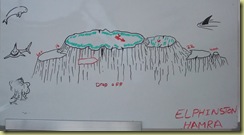
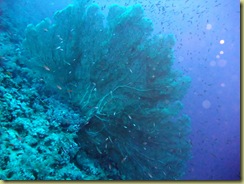

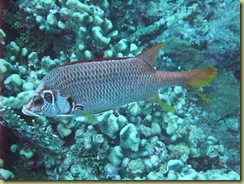
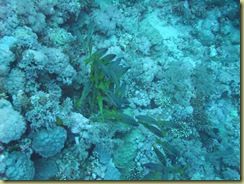

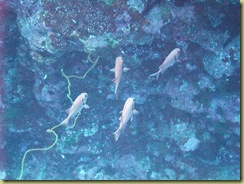
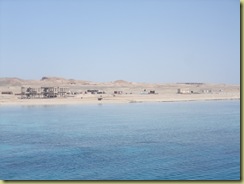
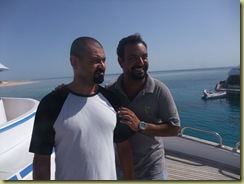
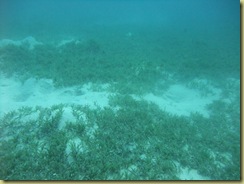
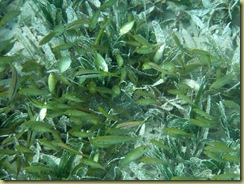
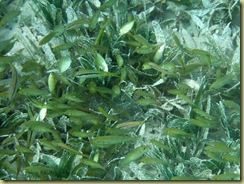
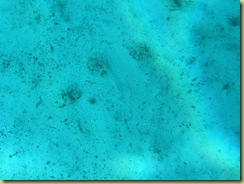
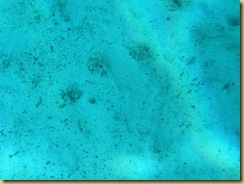
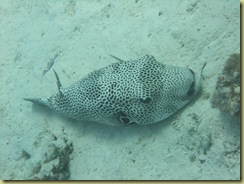
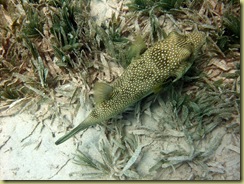
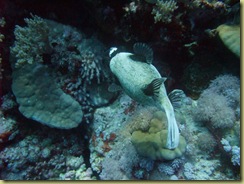
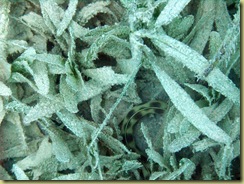

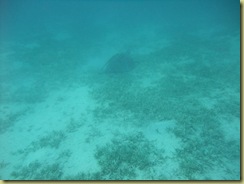
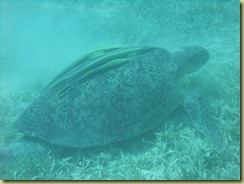
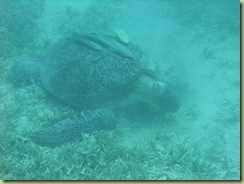
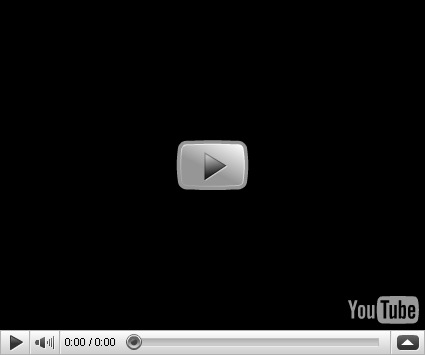
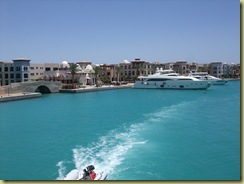
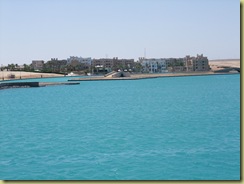
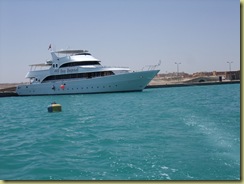
No comments:
Post a Comment